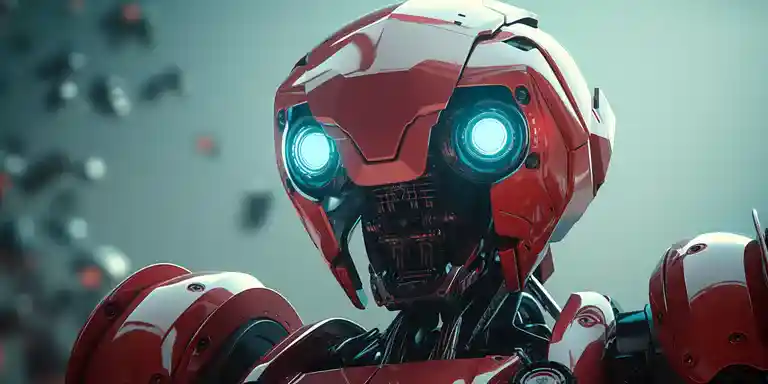Imagine a world where AI robots understand and interact with their environment as naturally as humans do with language. Once a distant dream, this vision is now on the brink of reality. The same technology that powered the meteoric rise of large language models (LLMs) like OpenAI’s GPT is being adapted to revolutionize robotics. This transition marks a pivotal moment in AI, akin to the leap made by LLMs in the digital realm.
➜ The Digital Transformation by LLMs
ChatGPT and its peers, such as LLaMA and Bard, have brought about a seismic shift in how we perceive AI’s capabilities in language processing. These models have garnered mainstream attention for their ability to handle complex tasks and offer human-like responses. ChatGPT, in particular, has become a household name, setting a new benchmark for AI’s potential in the digital space.
➜ Robotics: The Next AI Frontier
Robotics is poised to be the next domain where AI will leave an indelible mark. By infusing AI into robots, we can significantly enhance productivity across various sectors, including logistics, healthcare, and agriculture. This advancement promises to bring about efficiencies in the physical world, mirroring the digital revolution we’ve witnessed over the last few decades.
➜ Core Principles Behind the Success of GPT
To replicate the success of GPT in robotics, it’s crucial to understand the foundational elements that made GPT a standout. A significant component is the foundation model approach, where a single, versatile AI model is trained on a vast dataset to perform many tasks, outperforming specialized models. This approach has paved the way for a more generalized, adaptive form of AI.
➜ Training on Diverse and Quality Data
Another critical factor is the extensive, diverse data used for training GPT. This data, encompassing a wide range of internet content, has enabled GPT to develop a nuanced understanding of various subjects, which is crucial for its versatility and effectiveness.
➜ The Role of Reinforcement Learning
Reinforcement learning (RL), particularly RL from human feedback (RLHF), is vital in aligning AI responses with human preferences. Unlike traditional supervised learning, RLHF allows the AI to navigate toward a goal through trial and error, guided by human input. This approach has been instrumental in ChatGPT’s ability to generate responses that resonate with human understanding and preference.
➜ Envisioning a Robotic Revolution with Foundation Models
The principles underlying GPT’s success are now being applied to robotics. Using a foundation model approach, AI can be developed for multiple tasks in the physical world, addressing a wide range of scenarios. This method is anticipated to overcome the limitations of specialized AI models, especially in dealing with real-world unpredictabilities.
➜ Challenges in Data Acquisition for Robotics
In robotics, the challenge of data acquisition is amplified. Unlike the digital realm, there’s no vast data repository depicting how robots should interact with the physical world. Building this dataset requires extensive, real-world experimentation and is essential for training AI in robotics.
➜ Deep Reinforcement Learning in Robotics
Deep reinforcement learning (deep RL) is crucial for robots to navigate the physical world. Blending RL with deep neural networks enables robots to adapt and fine-tune their actions based on new experiences, a key to achieving human-like autonomy in robotics.
➜ The Road Ahead: A Complex Yet Promising Future
The journey to a robotic foundation model is laden with technical and commercial challenges distinct from those faced in developing GPT. The AI must be versatile enough to operate in varied real-world settings and adaptable to different hardware requirements across multiple industries. However, environments like warehouses offer ideal settings for training these models, given the diversity and volume of activities they encompass.
➜ The Imminent ‘GPT Moment’ for AI Robotics
We are at the cusp of witnessing a significant leap in robotic foundation models reminiscent of the breakthrough moment experienced by ChatGPT and similar models. With advancements in AI and robotics, 2024 is poised to be a landmark year, seeing an exponential increase in robotic applications in real-world settings.
The advent of the ‘GPT moment’ in AI robotics marks more than a technological milestone; it heralds a new era in the symbiosis between humans and machines. This transformative phase, akin to the revolution brought by large language models in the digital sphere, is set to redefine our interaction with the physical world. The possibilities are boundless as AI becomes increasingly capable of navigating and manipulating our environment. From enhancing logistics efficiency to pioneering novel healthcare approaches, these intelligent robots could reshape entire industries.
Moreover, this evolution carries profound implications for the workforce and society. As robots undertake tasks once deemed exclusively human, we may witness a shift in job roles, necessitating new skills and adaptations. However, alongside these challenges lies the potential for AI to unlock unprecedented levels of creativity and innovation in human endeavors.
As we anticipate these changes, it’s crucial to approach this future with both optimism and a critical eye. The ethical implications, particularly regarding privacy, security, and the impact on the labor market, must be thoughtfully addressed. Therefore, the journey towards AI-empowered robotics is not just a scientific and engineering challenge but a societal one.
Ultimately, the ‘GPT moment’ for robotics isn’t just about machines becoming more intelligent; it’s about how we, as a society, adapt to and harness this intelligence. For deeper insights into how AI continues to shape our world, stay tuned to NeuralWit, where the implications and advancements of AI are explored in depth.


